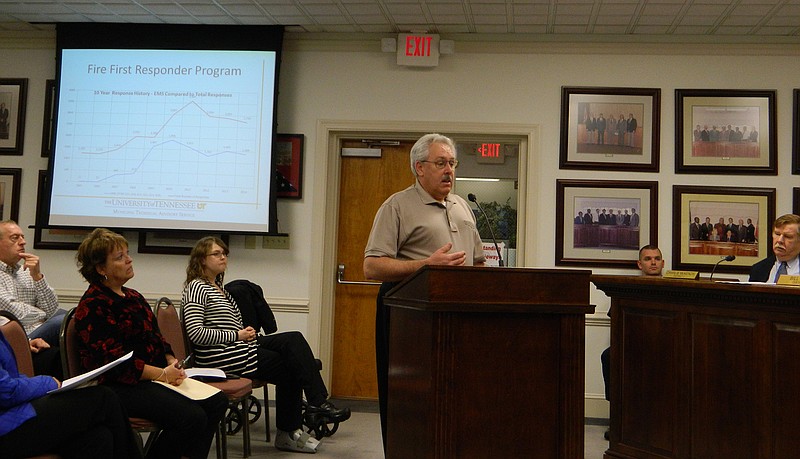CLEVELAND, Tenn. -- Cleveland leaders have had their first glimpse of what it might take to include emergency ambulance services within the city fire department, with first-year costs topping $1 million.
On Monday, Dennis Wolf, a fire management consultant with the Municipal Technical Advisory Service, reviewed the results of an ambulance study with the Cleveland City Council.
It will take at least three ambulances, 13 additional personnel and a subsidy from the city to include emergency ambulance services within Cleveland's fire department, he said.
"Basically, the fire department is [already] busy every day of the week, every hour of the day, so there's not a lot of additional time available for the fire department to assume the role of transport ambulance service without compromising the ability to still provide fire protection," said Wolf.
The program would require a supervisor with paramedic certification and each ambulance would be staffed by a paramedic and an emergency medical technician, according to the study.
Expenses for adding emergency ambulance services to the city fire department were projected to amount to $1.2 million in the first year of the program, which included a $360,000 capital outlay for ambulances and amounted to an overall deficit of $741,697.
Projected annual operating expenses ranged between $832,829 and $927,257 for the next four years and revenues ranged from $468,202 to $516,781, based on a 78 percent collection rate.
Net losses were projected to be $352,852 to $410,475 during the same period.
The study, which Wolf said utilized 911 call data and comparable undertakings by other municipalities, indicated that the Cleveland Fire Department would need to provide 24/7 staffing to handle the expected requests for services.
Last year, about 1,400 emergency ambulance calls were dispatched through 911 to city residents, said Wolf. The study assumed that nearly 1,000 of those calls required transportation to a hospital.
Overall, more than 14,700 calls were made for emergency, non-emergency and convalescent transport within the city last year, said Wolf.
Vice Mayor George Poe opposed the exclusion of convalescent transport services, citing increased revenues and better collection rates and concerns.
Wolf said that would make costs go up considerably, requiring at least six or seven ambulances.
Even so, Poe said it's a necessary service.
"In my opinion, we owe it to the city taxpayers to provide an emergency and convalescent ambulance service," said Poe, also citing staffing concerns with Bradley County Emergency Medical Service.
While the Cleveland Fire Department has been providing first responder medical services to city residents for a number of years, Bradley County EMS is currently the only ambulance service provider for both county and city residents.
In November, Bradley County EMS Director Danny Lawson told county leaders that his department would need between eight and 10 full-time paramedics over the next couple of years.
Paul Leach is based in Cleveland. Email him at paul.leach.press@gmail.com.
